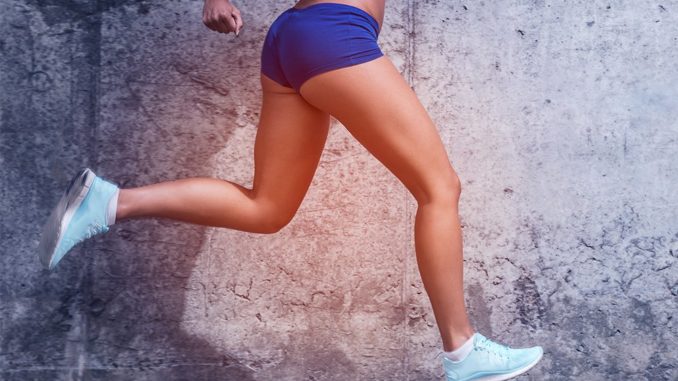
There are literally dozens upon dozens of exercises that’ll blast your legs, but the four you’ll meet here are the most beneficial. Each emphasizes crucial movement patterns for a lean yet powerful lower body, and we’ve amped them up—either in the form of resistance, stance, or elevation—to better challenge the glutes for an increased metabolic effect. At the risk of finance-speak overkill, add ’em to your portfolio and watch the dividends roll in.
No leg routine would be complete without a squat—it gets more muscles and joints working together than any other stand-in-place exercise. As a result, you release hormones that can speed muscle hypertrophy (a.k.a. growth) and fat loss, studies show. The goblet type is king among this royal crew: Holding a weight by your chest keeps you from slumping forward and forces you to shift weight into your heels (so you don’t tip over). Both tweaks bring your hips closer to the ground for a better burn.
DO IT: Stand with feet shoulder-width apart and hold a dumbbell vertically in front of your chest, both hands cupping the top of the weight, your elbows pointing toward the floor (a). Push your hips down and back and bend your knees to lower your body until your thighs are at least parallel to the ground, your elbows brushing the insides of your knees (b). Push through your heels and squeeze your glutes to return to start. That’s one rep.
Switch up your squat with these 20 variations that will help you tone your butt:
Such a simple move, this one. All it involves is stepping up onto a box or bench. Except that you hold weights at your sides for extra resistance, and you lower back down onto the floor with control—emphasizing the “negative” or “eccentric” phase of the exercise, which research suggests builds more muscle mass than focusing on the lifting portion alone. And because your muscles spend a relatively long time under tension to complete one full rep, you can nuke a lot of cals with a single set.
DO IT: Stand in front of a box or bench about 12 to 18 inches tall and hold a pair of dumbbells at your sides at arm’s length. Place your right foot firmly on the step (a), then push through your right heel to lift your body up until your right leg is straight and your left foot is elevated (b). Keeping your torso tall, step your left foot, then your right, back onto the floor to return to start. That’s one rep.
Essentially the exaggerated motion of walking and running, the lunge lights up every muscle in your legs—even the tiny stabilizing ones, like your inner thighs. A reverse lunge requires the same balance and neuromuscular coordination of the forward type, but it engages your posterior chain first, helping even out quad dominance (and taking stress off your knees). And that “deficit” part? It’s just a fancy term for propping your front foot on a step, so your glute has to travel farther—and work harder—to return to start.
DO IT: Stand on a six-inch step or box and hold a pair of dumbbells at your sides at arm’s length (a). Keeping your torso tall, step backward off the box with your right leg and slowly lower your body until your left knee is bent at least 90 degrees and your right knee nearly touches the floor (b). Push through your left heel to return to start. That’s one rep.
The movement pattern here is the hip hinge, a foundation of most posterior-chain exercises (think deadlift, swing, and hip thrust). It’s essential for hitting the hamstrings and glutes as well as boosting hip stability. The pull-through, however, is an easier-to-learn, more universal exercise that allows you to train those backside muscles without overloading pressure on your spine. Plus, this single-leg style increases activation to the working-side glutes and hamstrings and recruits your core for balance.
DO IT: Stand in front of the cable machine at your gym, or loop a resistance band around a stable anchor behind you. Prop your left foot, knee bent, on a bench behind you, grab the band between your legs with your left hand, and hinge forward at your hips until your torso is about parallel to the floor (a). Pull the band through as you thrust your hips forward (b). That’s one rep.
This article originally appeared in the July/August 2017 issue of Women’s Health. For more great advice, pick up a copy of the issue on newsstands now!